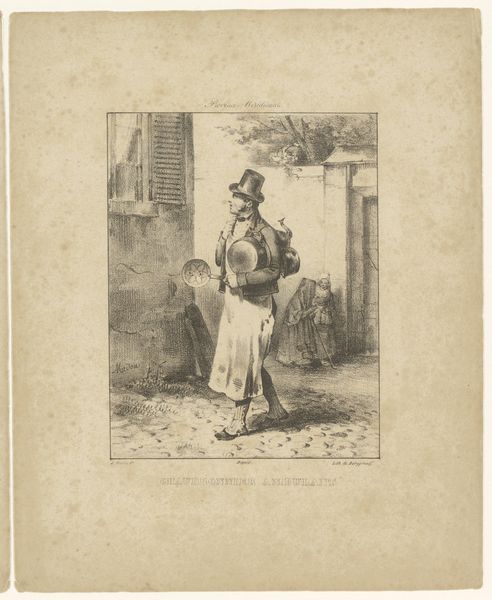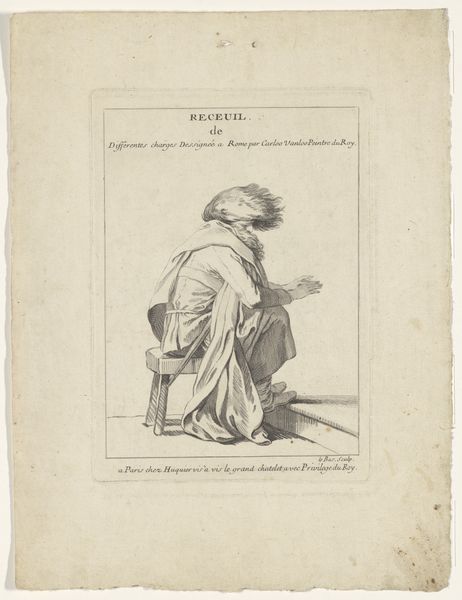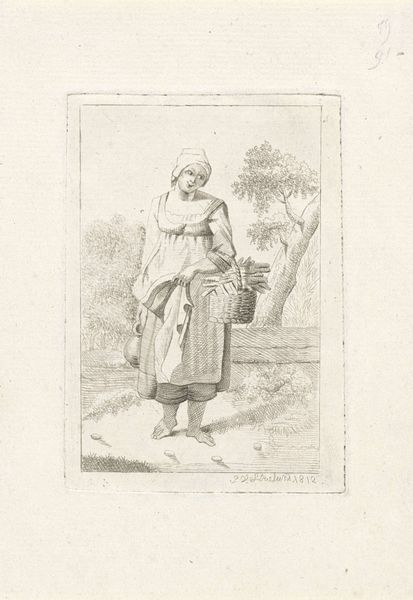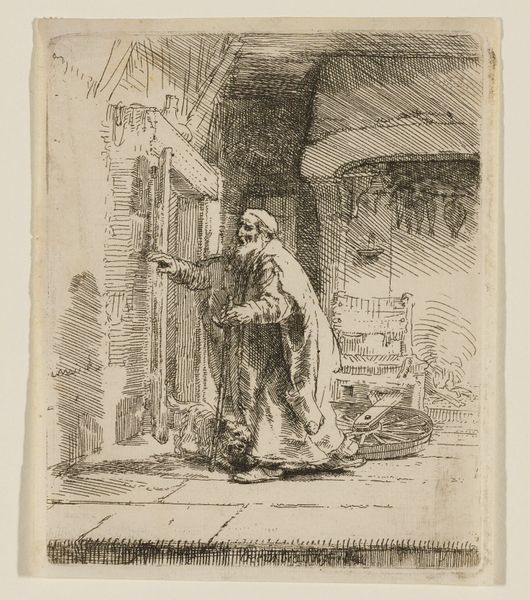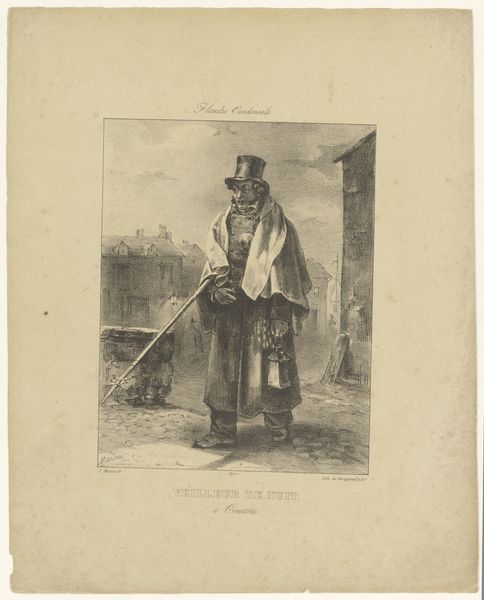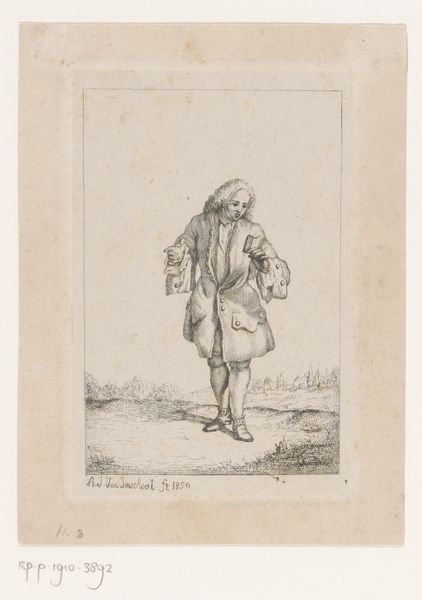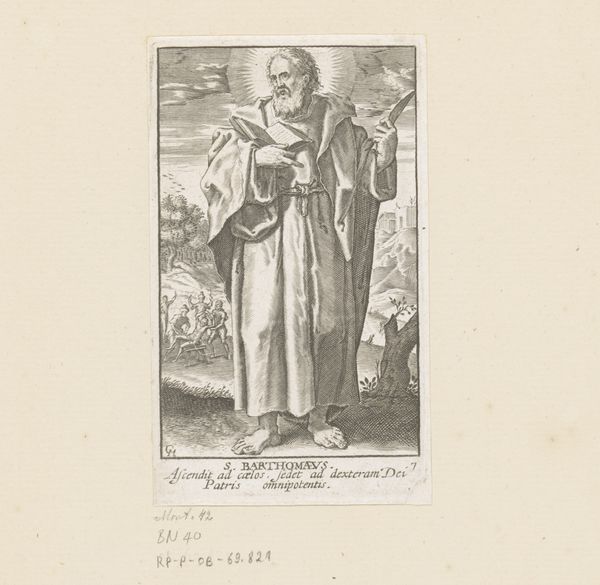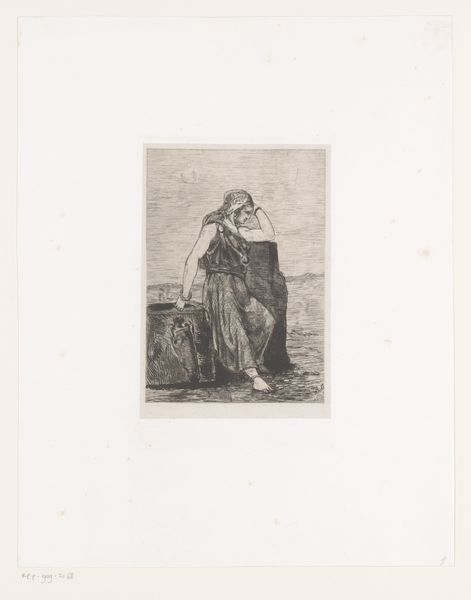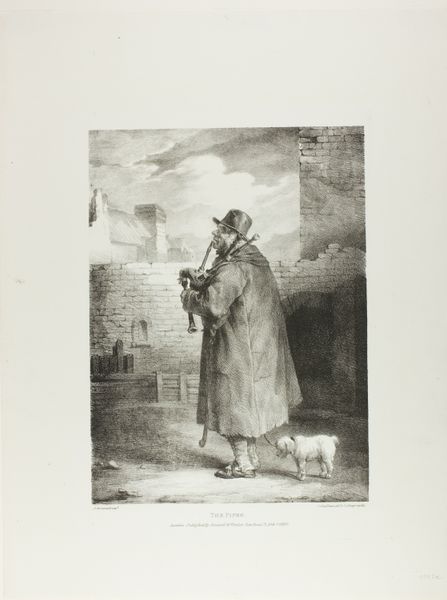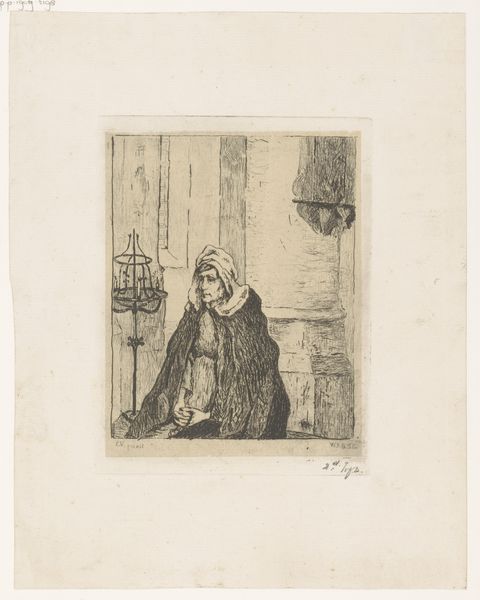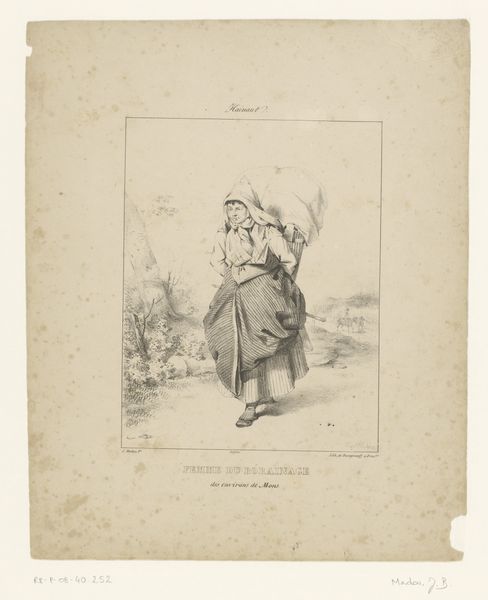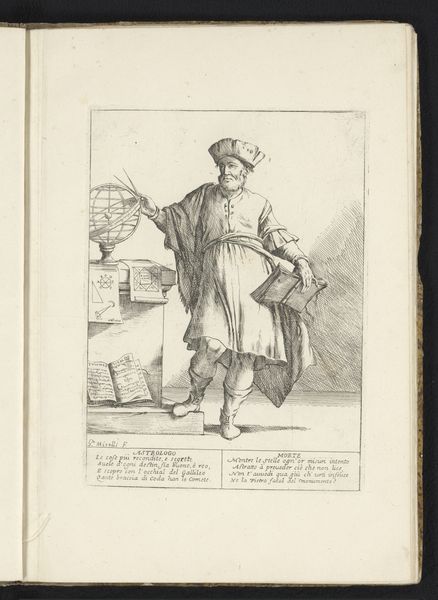
#
aged paper
#
toned paper
#
light pencil work
#
pencil sketch
#
personal sketchbook
#
ink drawing experimentation
#
pen-ink sketch
#
sketchbook drawing
#
watercolour illustration
#
sketchbook art
Dimensions: height 341 mm, width 268 mm
Copyright: Rijks Museum: Open Domain
Editor: This is "Vrouw met mand," or "Woman with basket," a drawing made around 1825 by Guillaume Philidor Van den Burggraaff. It looks like ink on toned paper, and what strikes me is the contrast between the detailed rendering of the woman and the looser sketch of the background. What catches your eye in this piece? Curator: Well, knowing that it's from 1825 is key. Consider the rise of industrialization in Europe. This image presents us with a working woman, but does so with a certain... romanticism, wouldn't you say? It’s not simply a neutral depiction of labor. Editor: Romanticism? It seems pretty straightforward. She's just carrying a basket. Curator: But look closer. The 'neutral' image of a woman carrying a basket is never just neutral. The title itself, ‘Freer d’ouvrier,’ suggests that, despite appearances, this working woman, portrayed amid hints of Brussels urban life, could be seen as embodying an idealized figure of pre-industrial, arguably 'freer,' labor. Don't you find something inherently political in that representation? Consider also the perspective of a 19th-century art audience: How might they view this image amidst the social changes of the time? Editor: I see what you mean. Framing it as “freer” already places a value on a particular way of life in response to industrial change. So, it's not just *what* she's doing but *why* it's being shown to a specific audience at a specific time. It is not about being literally free. It represents an abstract feeling. Curator: Exactly! It reflects the politics of imagery and the public role of art. It's a subtle but potent statement about societal values at a time of considerable upheaval. And also reminds us how gender has always been very present. Editor: I hadn't considered how much the simple act of depicting her labor, in that specific context, could be loaded with meaning. I guess I was too focused on the “simple” depiction. Curator: We can agree that simplicity is always deceptive. Art never exists in a vacuum. I find it incredibly useful to think how art could affect the status quo.
Comments
No comments
Be the first to comment and join the conversation on the ultimate creative platform.
